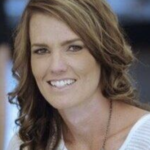
When students have experiences with manipulatives in math that engage their bodies and as many of their senses as possible, they develop a conceptual foundation that engages the full power of their mathematical minds. This allows them to build procedural fluency from conceptual understanding as they move from concrete experiences to pictorial representations to abstractly communicating about math with symbols, words and numbers.
Abstract learning reinforces memorization and the idea of math as answer-finding, whereas concrete and pictorial learning emphasizes reasoning and critical thinking. For students to learn math in a way that supports how their brains naturally learn, they need experiences that involve their senses, that pictorially represent those experiences and that connect those experiences to symbols, words and numbers.
Defining procedural fluency, conceptual understanding
Math educators talk about this process as building procedural fluency from conceptual understanding.
Students build conceptual understanding from concrete experiences that can include working with manipulatives in math, moving their bodies through space and using as many of the senses as possible. For example, I might have students walk on a marked line as part of a concrete experience that develops their understanding of negative numbers — showing that they are not just tick marks on the line but a space between tick marks, and that the space that represents a thing called a unit, and that the direction they move can keep track of positive or negative movement. They experience moving along the line through space and attach that movement to hops, perhaps.
In the pictorial representation phase, I would ask students to draw what they just did. I’d use intentional questioning to help them connect how their physical hops are represented by the spaces in between the tick marks on their drawing. They’ll end up with a model that in essence is a number line, but they are building it from their own experiences.
This process of moving from concrete experiences to pictorial representations results in students having meaning for the number line as a mental model. Without the opportunity to co-construct a number line, it may be just tick marks and numbers that have no meaning or purpose for the student.
Finally, in the third stage, students are able to make meaning and attach it to number symbols and words for procedural fluency, rather than just memorizing a process to get answers. So instead of trying to memorize tricks and rules associated with integer operations, such as when to take the sign of a bigger number or when the signs stay the same or when the signs change, students can reason through the mental images they have constructed from experiences and drawing. This equips them to reason through adding negative numbers, for example.
The process can take some time
This progression from concrete experiences to procedural fluency doesn’t always happen in a day or even in a year. Children develop many reasoning schemes from birth through about age 8 as they construct a concept of a number as a composite unit. Then multiplicative reasoning is built from the foundational concept of numbers as things made up of things that can be broken apart and put together in many ways, at which point students are able to break numbers into different units. They can begin to make sense of negative units, fractional units and algebraic units, but they all use the thinking structures that were built in early elementary school.
In early elementary grades, students are always touching things such as cubes, moving them around, counting them and grouping them. They begin building towers of cubes and later draw them with increasingly abstract pictures. They can count the number of towers and the number of cubes in each tower to get the total number of cubes. If there are three cubes in each tower and a student holds up two fingers and says there are six cubes, teachers can help them think about how they are keeping track of the towers, the cubes in each tower and the total cubes at the same time. A single finger represents several things, which is an important part of making sense of multiplicative reasoning. Building the conceptual understanding of multiplication is possible through concrete experiences and pictorial representations and leads to procedural fluency of multiplication facts.
Moving from concrete experiences with cubes and towers to pictorially representing them allows students to reason with mental anchors (pictures in their brain) instead of memorizing flashcards. For example, a student can figure out what three multiplied by anything totals by recreating the experience of working with towers and cubes within their mind. They can reason or create actual or mental pictures to ground answers in meaning instead of relying on memorized information that lacks meaning and is at risk of being forgotten.
Amber Gardner, Ph.D., is the partner of pre-K-12 mathematics teaching and learning for Cherry Creek School District in Colorado. To learn more about the neuroscience of math, she recommends looking at this research. Reach out to Gardner via email.
Opinions expressed by SmartBrief contributors are their own.
_________________________
Subscribe to the FREE Math Education SmartBrief email newsletter to see the latest hot topics in math education. It’s among SmartBrief’s more than 250 industry-focused newsletters.
